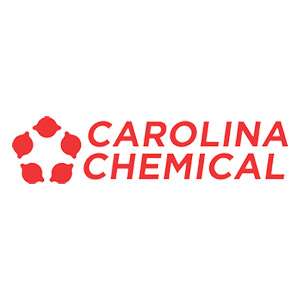100g
Showing 1301–1350 of 2169 results
-

MEM Chloride
$397.89 Add to cart View Product DetailsMEM Chloride
-

Mephenesin, Powder
$651.16 Add to cart View Product DetailsMephenesin, Powder
-

MES Free Acid
$86.84 Add to cart View Product DetailsMES Free Acid
-

MES Sodium Salt, Biological Buffer
$173.75 Add to cart View Product DetailsMES Sodium Salt, Biological Buffer
-

Mesityl Bromide
$122.38 Add to cart View Product DetailsMesityl Bromide
-

meso-Erythritol
$140.04 Add to cart View Product Detailsmeso-Erythritol
-

meso-Erythritol
$236.06 Add to cart View Product Detailsmeso-Erythritol
-

Mesothelin, hFc, Human
$172.50 Add to cart View Product DetailsMesothelin, also known as MSLN, is a 40 kDa protein that is expressed in mesothelial cells. It has been reported that this protein is over expressed in several human tumors, including mesothelioma, ovarian cancer, pancreatic adenocarcinoma, lung adenocarcinoma, and cholangiocarcinoma. Mesothelin can bind MUC16 (also known as CA125), indicating that the interaction of mesothelin and MUC16 may contribute to the implantation and peritoneal spread of tumors by cell adhesion. Since mesothelin is overexpressed in several cancers and is immunogenic, the protein could be exploited as tumor marker or as the antigenic target of a therapeutic cancer vaccine.
-

Mesothelin, His, Human
$172.50 Add to cart View Product DetailsMesothelin, also known as MSLN, is a 40 kDa protein that is expressed in mesothelial cells. It has been reported that this protein is over expressed in several human tumors, including mesothelioma, ovarian cancer, pancreatic adenocarcinoma, lung adenocarcinoma, and cholangiocarcinoma. Mesothelin can bind MUC16 (also known as CA125), indicating that the interaction of mesothelin and MUC16 may contribute to the implantation and peritoneal spread of tumors by cell adhesion. Since mesothelin is overexpressed in several cancers and is immunogenic, the protein could be exploited as tumor marker or as the antigenic target of a therapeutic cancer vaccine.
-

Metformin Hydrochloride
$287.67 Add to cart View Product DetailsMetformin Hydrochloride
-

Metformin Hydrochloride, BP
$620.28 Add to cart View Product DetailsMetformin Hydrochloride, BP
-

Methacholine Chloride, High Purity
$355.42 Add to cart View Product DetailsMethacholine Chloride, High Purity
-

Methadone Hydrochloride (CII), USP
$7,475.91 Add to cart View Product DetailsMethadone Hydrochloride (CII), USP
-

Methanesulfonamide
$155.19 Add to cart View Product DetailsMethanesulfonamide
-

Methanesulfonic Acid Ethyl Ester
$710.93 Add to cart View Product DetailsMethanesulfonic Acid Ethyl Ester
-
![Methanesulfonic Acid, [for HPLC]](https://advatechgroup.com/wp-content/plugins/woocommerce/assets/images/xplaceholder.webp.pagespeed.ic.ANHCL-f_RA.webp)
Methanesulfonic Acid, [for HPLC]
$87.04 Add to cart View Product DetailsMethanesulfonic Acid, [for HPLC]
-

Methionine, USP
$104.67 Add to cart View Product DetailsMethionine, USP
-

Methocarbamol, USP
$644.52 Add to cart View Product DetailsMethocarbamol, USP
-

Methotrexate, USP
$7,558.62 Add to cart View Product DetailsMethotrexate, USP
-

Methoxyamine Hydrochloride
$263.93 Add to cart View Product DetailsMethoxyamine Hydrochloride
-

Methyl 3-Bromopropionate
$263.93 Add to cart View Product DetailsMethyl 3-Bromopropionate
-

Methyl 3-Oxopentanoate
$393.89 Add to cart View Product DetailsMethyl 3-Oxopentanoate
-

Methyl alpha-D-Glucopyranoside
$86.89 Add to cart View Product DetailsMethyl alpha-D-Glucopyranoside
-

Methyl Benzoylformate
$294.42 Add to cart View Product DetailsMethyl Benzoylformate
-

Methyl Bromoacetate
$190.85 Add to cart View Product DetailsMethyl Bromoacetate
-

Methyl Green Zinc Chloride Salt
$643.24 Add to cart View Product DetailsMethyl Green Zinc Chloride Salt
-

Methyl Iodide
$107.72 Add to cart View Product DetailsMethyl Iodide
-

Methyl Iodide, Reagent
$192.91 Add to cart View Product DetailsMethyl Iodide, Reagent
-

Methyl Isoeugenol
$212.95 Add to cart View Product DetailsMethyl Isoeugenol
-

Methyl L-(-)-Lactate
$51.75 Add to cart View Product DetailsMethyl L-(-)-Lactate
-

Methyl Nicotinate, Reagent
$115.92 Add to cart View Product DetailsMethyl Nicotinate, Reagent
-

Methyl Phenoxyacetate
$474.82 Add to cart View Product DetailsMethyl Phenoxyacetate
-

Methyl Red Sodium Salt, Reagent, ACS
$297.18 Add to cart View Product DetailsMethyl Red Sodium Salt, Reagent, ACS
-

Methyl Red, Reagent, ACS
$224.70 Add to cart View Product DetailsMethyl Red, Reagent, ACS
-

Methyl Sulfone, Crystal
$134.70 Add to cart View Product DetailsMethyl Sulfone, Crystal
-

Methyl Terephthalaldehydate
$166.53 Add to cart View Product DetailsMethyl Terephthalaldehydate
-

Methyl Violet 2B
$229.36 Add to cart View Product DetailsMethyl Violet 2B
-

Methyl-4-methoxybenzoate, 99+ Percent
$146.58 Add to cart View Product DetailsMethyl-4-methoxybenzoate, 99+ Percent
-

Methyl-beta-cyclodextrin
$645.89 Add to cart View Product DetailsMethyl-beta-cyclodextrin
-

Methylamine Hydrochloride (DEA List I Chemical)
$80.05 Add to cart View Product DetailsMethylamine Hydrochloride (DEA List I Chemical)
-

Methylcellulose, 4,000 cP, FCC
$112.76 Add to cart View Product DetailsMethylcellulose, 4,000 cP, FCC
-

Methylcellulose, 4,000 cP, USP
$176.19 Add to cart View Product DetailsMethylcellulose, 4,000 cP, USP
-

Methylcellulose, 400 cP, USP
$105.92 Add to cart View Product DetailsMethylcellulose, 400 cP, USP
-

Methylene Blue Chloride
$283.80 Add to cart View Product DetailsMethylene Blue Chloride
-

Methylene Blue, C.I. 52015
$174.78 Add to cart View Product DetailsMethylene Blue, C.I. 52015
-

Methylene Green
$233.08 Add to cart View Product DetailsMethylene Green
-

Methylhexanamine Hydrochloride, Powder – 100G
$72.68 Add to cart View Product DetailsCAS Number 13803-74-2 Molecular Formula C7H17N · HCL Molecular Weight 151.68 -

Methylparaben
$45.66 Add to cart View Product DetailsMethylparaben
-

Methylparaben, NF
$87.92 Add to cart View Product DetailsMethylparaben, NF
-

Methylphenidate Hydrochloride (CII), USP
$4,448.37 Add to cart View Product DetailsMethylphenidate Hydrochloride (CII), USP






